In the realm of online auctions, DealDash stands out as a trailblazer, transforming the way consumers shop and interact with e-commerce since its inception. Founded with a vision to merge entertainment with shopping, DealDash has revolutionized the auction experience. Users engage by purchasing bids to participate in auctions where each bid raises the item’s price incrementally and extends the auction duration. DealDash continues to redefine online auctions, blending savings with entertainment in a dynamic marketplace where consumer engagement thrives. Let’s embark on a journey to uncover its intricacies: What is DealDash? How Does DealDash Work
Introduction to DealDash
Brief Overview of DealDash
DealDash is an innovative online auction platform that allows users to bid on a wide variety of products at potentially significant discounts. Founded in 2009, DealDash has grown to become one of the leading pay-to-bid auction sites, attracting millions of users worldwide. The platform offers a diverse range of items, including electronics, home appliances, gift cards, and more. Unlike traditional auctions, DealDash operates on a unique model where participants purchase bid packs and use these bids to compete for items. Each bid placed increases the item’s price by a small amount and resets the auction clock, making the process both strategic and competitive.
Purpose and Appeal of the Platform
The primary purpose of DealDash is to provide an engaging and potentially rewarding shopping experience where users can acquire high-quality products at a fraction of their retail price. The appeal of DealDash lies in its gamified auction format, which combines the thrill of bidding with the opportunity to win items at substantial discounts. People love using the platform not just because they can save money, but also because the bidding process is exciting and strategic.
DealDash’s “Buy It Now” feature adds to its appeal by offering a safety net for participants. If you don’t win an auction, you can still buy the item at its retail price and get all your spent bids back. So, you won’t lose your money in the process. This feature, along with the variety of available products and the potential for significant savings, makes DealDash an attractive option for bargain hunters and online shoppers looking for a unique auction experience.
History and Background of DealDash
Founding and Evolution of DealDash
William Wolfram, a young entrepreneur from Finland, founded DealDash in 2009. Inspired by the pay-to-bid auction model, Wolfram aimed to create a more customer-friendly and transparent platform. He wanted to address common frustrations with similar auction sites, such as lack of customer support and unfair bidding practices. From its inception, DealDash focused on providing a better user experience with features like a 100% money-back guarantee on first bid pack purchases and the innovative “Buy It Now” option.
Over the years, DealDash has continuously evolved by expanding its product offerings, improving its website and mobile app interface, and enhancing customer service. The platform has gained a loyal user base, thanks to its commitment to transparency and user satisfaction.
Key Milestones and Achievements
2009: Launch of DealDash
- DealDash officially launched, offering a new take on the pay-to-bid auction model.
2011: Introduction of “Buy It Now”
- DealDash introduced the “Buy It Now” feature, allowing users to purchase auction items at retail prices and get their bids back if they did not win, thus reducing the risk of losing money.
2012: Money-Back Guarantee
- DealDash implemented a 100% money-back guarantee on first bid pack purchases, ensuring new users could try the platform risk-free.
2014: Mobile App Launch
- DealDash launched its mobile app, making it easier for users to participate in auctions on the go.
2016: Reaching 10 Million Registered Users
- The platform celebrated a significant milestone by reaching 10 million registered users, highlighting its growing popularity.
2017: Partnership with Charity Organizations
- DealDash began partnering with various charities, integrating charitable giving into its auctions and enhancing its community impact.
2018: Enhancing Customer Support
- Continuous improvements in customer support, including 24/7 live chat, to ensure users receive timely assistance.
2020: Expansion of Product Categories
- DealDash expanded its product categories, adding more high-demand items like electronics, home goods, and gift cards to attract a broader audience.
2022: Launch of DealDash VIP Program
- The VIP program was introduced to reward loyal users with exclusive benefits, discounts, and early access to special auctions.
Types of Online Auctions
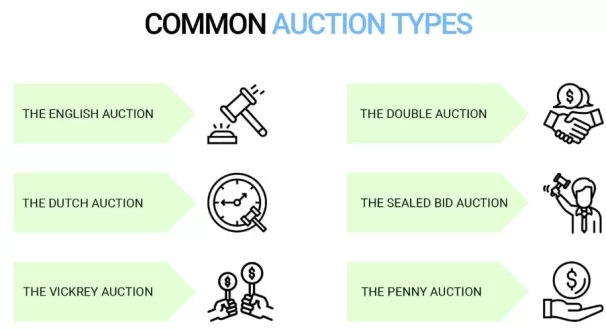
There are several types of online auctions:
- English Auction: This is the traditional auction format where bidders publicly place increasingly higher bids, with the highest bidder winning the item.
- Dutch Auction: In a Dutch auction, the auctioneer starts with a high price that is gradually lowered until a bidder accepts the price or it reaches a predetermined minimum.
- Sealed-Bid Auction: Bidders submit their bids privately, and the highest bid wins the item at the bid price.
- Reverse Auction: Also known as procurement auctions, this type involves buyers posting what they want and suppliers bidding down the price to win the contract.
- Penny Auction: Participants incrementally increase the bid by a small amount (e.g., one cent) with each bid placed, often paying a fee for each bid. The auction ends when no new bids are placed within a set time limit.
Bid pack auctions are typically associated with penny auctions or similar formats where participants purchase packs or bundles of bids. In penny auctions, participants often buy these bid packs in advance, and each bid placed on an item in the auction is deducted from their bid credits or pack. This model allows participants to compete for items by incrementally increasing the bid by a small amount (often a penny or less) with each bid placed, thus contributing to the overall dynamics of the penny auction format.
How does DealDash Work?
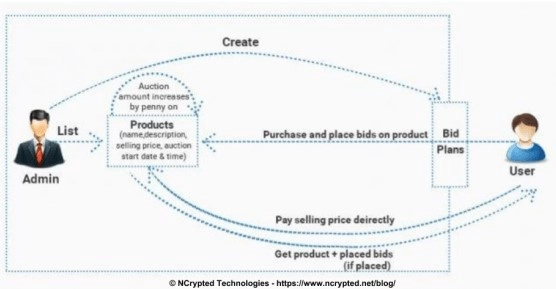
Registration Process
To start using DealDash, users need to create an account. The registration process is straightforward:
- Sign Up: Visit the DealDash website or download the mobile app.
- Create an Account: Provide basic information such as your name, email address, and password.
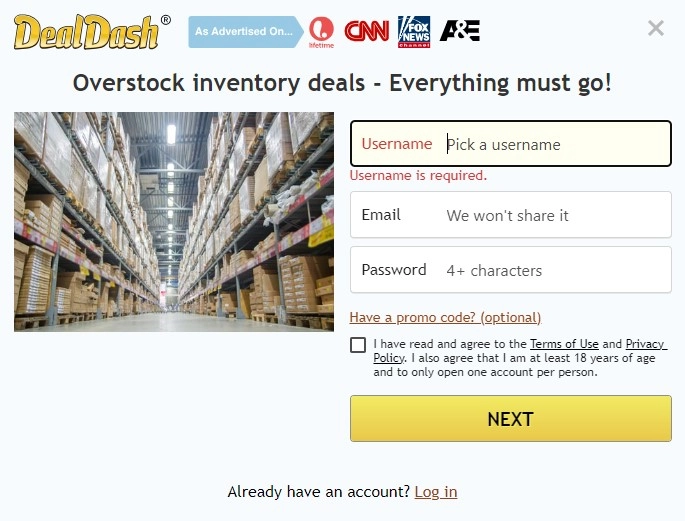
3. Verification: Verify your email address by clicking on the confirmation link sent to your email.
4. Login: Use your credentials to log into your newly created DealDash account.
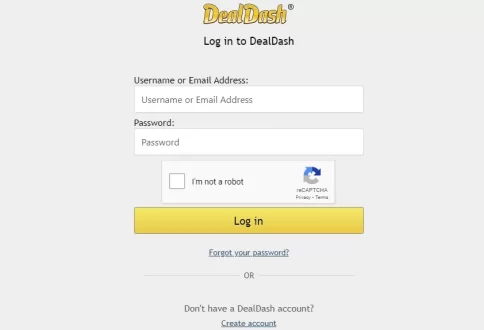
Purchasing Bid Packs
Before participating in auctions, users must purchase bid packs. Here’s how to do it:
- Navigate to Bid Packs: On your dashboard, find the option to buy bid packs.
- Select a Pack: Choose from various bid pack sizes, ranging from small packs (e.g., 100 bids) to larger packs (e.g., 1,000 bids).
- Payment: Pay for your selected bid pack using a credit card, PayPal, or other available payment methods.
- Bid Balance: Once purchased, the bids will be added to your account balance, ready for use in auctions.
Bidding Process Explained Step-by-Step
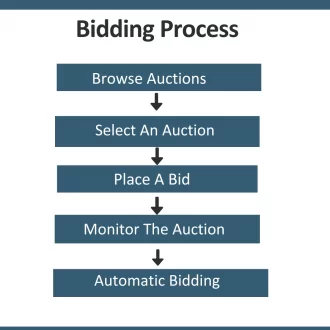
Participating in a DealDash auction involves strategic bidding. Here’s a step-by-step guide:
- Browse Auctions: Explore the ongoing and upcoming auctions on the DealDash platform.
- Select an Auction: Click on an auction you’re interested in to view its details.
- Place a Bid: Click the “Bid” button to place a bid. Each bid increases the item’s price by $0.01 and resets the auction timer by 10 seconds.
- Monitor the Auction: Watch the auction closely. The timer resets with each new bid placed, and the process continues until no more bids are placed within the remaining time.
- Automatic Bidding: Optionally, use the BidBuddy feature to set automatic bids. Enter the maximum number of bids you’re willing to place, and BidBuddy will bid on your behalf.
How Auctions Are Won
Winning a DealDash auction requires being the last bidder when the timer runs out. Here’s how it works:
- Last Bidder: If no one places a bid before the timer reaches zero, the auction ends and the last bidder wins.
- Final Price: The winner pays the final auction price, which is often significantly lower than the retail value of the item.
- Payment and Shipping: Complete the payment process and provide shipping details to receive the item.
Explanation of the “Buy It Now” Option
DealDash offers a “Buy It Now” (BIN) option as a safety net for participants who don’t win an auction:
- Post-Auction: If you don’t win an auction, you have the option to purchase the item at its retail price.
- Redeem Bids: When you use the BIN option, all the bids you placed on that auction are returned to your account.
- Payment: Pay the retail price of the item, and the bids spent during the auction are credited back to your account.
- Secure Purchase: This option ensures that your bids are not wasted, providing value even if you don’t win.
By following these steps, users can effectively participate in DealDash auctions, enjoy the excitement of bidding, and potentially secure great deals on a wide variety of products.
Types of Products Available on DealDash

Categories of Items Available for Auction
Electronics
- Includes smartphones, tablets, laptops, cameras, and gaming consoles.
Home Goods
- Features kitchen appliances, furniture, home decor, and cleaning tools.
Fashion and Accessories
- Offers clothing, shoes, handbags, watches, and jewelry.
Health and Beauty
- Includes skincare products, makeup, haircare tools, and fitness equipment.
Gift Cards
- Various gift cards for popular retailers, restaurants, and online services.
Toys and Games
- Offers toys, board games, outdoor gear, and hobby supplies.
Sports and Outdoors
- Features fitness equipment, camping gear, sports accessories, and outdoor apparel.
Travel and Experiences:
- Includes vacation packages, travel accessories, and experience vouchers.
Examples of Popular Auction Items
Apple Products
- Items like iPhones, iPads, MacBooks, and Apple Watches are often in high demand.
Kitchen Appliances
- Popular items include coffee makers, air fryers, blenders, and multi-cookers.
Home Electronics
- TVs, sound systems, gaming consoles, and smart home devices attract many bidders.
Gift Cards
- Gift cards for Amazon, Walmart, Starbucks, and other retailers are frequently auctioned.
Vacuum Cleaners and Home Tools
- Products like robotic vacuums, power tools, and home improvement gadgets are also popular.
Fashion and Accessories
- Designer handbags, luxury watches, and trendy clothing items are sought after.
Fitness Equipment
- Treadmills, exercise bikes, yoga mats, and fitness trackers appeal to health-conscious bidders.
Outdoor Gear
- Camping tents, hiking backpacks, fishing gear, and outdoor apparel are featured items.
Cost Structure on DealDash
Pricing of Bid Packs
When participating in auctions on DealDash, users must purchase bid packs to place bids. Here’s how the pricing generally works:
Bid Pack Options
- Bid packs are available in various sizes, typically ranging from small packs (e.g., 100 bids) to larger packs (e.g., 1,000 bids).
Cost per Bid
- The price per bid varies depending on the bid pack size and any promotional offers that may be available.
Payment Methods
- Users can purchase bid packs using credit cards, PayPal, or other accepted payment methods.
Additional Costs
In addition to the cost of bid packs, participants should be aware of these additional costs:
Final Auction Price
- If you win an auction, you pay the final auction price, which includes the total amount of money spent on bids during the auction. This final price is often significantly lower than the retail price of the item.
Shipping Fees
- Depending on the item won and the user’s location, shipping fees may apply. DealDash typically provides information about shipping costs on the auction page or during the checkout process.
Buy It Now Option
- While not a direct cost, using the “Buy It Now” option to purchase an item at its retail price after losing an auction allows users to reclaim their spent bids. This feature provides a safety net and ensures that bids are not entirely lost if an auction is unsuccessful.
Understanding the cost structure on DealDash is essential for users to budget effectively and maximize their bidding strategy. By purchasing bid packs and strategically participating in auctions, users can potentially secure desirable items at a fraction of their retail price, making DealDash a popular choice for online auction enthusiasts.
Strategies for Winning Auctions on DealDash
Tips and Techniques for Successful Bidding:
Understand the Auction Dynamics
- Familiarize yourself with how bidding increments the price and resets the auction timer. This knowledge helps in timing your bids effectively.
Set a Budget
- Determine your maximum budget for bidding on an item. Factor in the cost of bid packs and the potential final auction price.
Use BidBuddy
- BidBuddy is DealDash’s automatic bidding tool. Set the maximum number of bids you’re willing to spend on an auction, and BidBuddy will place bids on your behalf, helping to avoid last-second bidding wars.
Monitor Auction Activity
- Watch the bidding patterns and activity in an auction. Note when bids are typically placed and how frequently.
Bid Strategically
- Avoid bidding too early in the auction. Wait until the auction price is closer to its retail value before placing bids to conserve bids and increase your chances of winning.
Utilize Bid Discounts
- Take advantage of promotional offers and bid sales to purchase bid packs at discounted rates, maximizing your bidding power.
Research Retail Prices
- Know the retail prices of items you’re interested in. This helps in determining the value and potential savings of winning an auction.
Common Strategies Used by Experienced Bidders
Sniping
- This strategy involves placing bids at the last moment, just before the auction timer expires, to catch other bidders off guard and secure a win.
Bid Stacking
- Bidders may place multiple bids in quick succession to discourage others from bidding further, aiming to intimidate competitors and increase their chances of winning.
Observation and Patience
- Experienced bidders often observe auction trends and patiently wait for the right moment to place their bids, avoiding unnecessary bidding wars and conserving bids for crucial moments.
Timing and Strategic Bidding
- Timing is crucial. Bidders may strategically place bids during off-peak times or when fewer competitors are active, increasing their chances of winning with fewer bids.
Knowing When to Stop
- Setting limits and knowing when to stop bidding is essential. Experienced bidders recognize when the auction price exceeds its value and gracefully bow out to avoid overspending.
User Experience and Reviews on DealDash
Positive Testimonials
- Users often praise DealDash for its wide selection of products available for auction.
- Many appreciate the thrill of bidding and the potential to win items at significantly reduced prices.
- The “Buy It Now” option receives positive feedback for allowing users to recover bids spent in unsuccessful auctions.
Analysis of User Satisfaction
- Overall, users express satisfaction with the platform’s user interface, which is designed to be intuitive and user-friendly.
- The auction process, including bid placement and auction monitoring, is generally well-received.
- Users appreciate the transparency of DealDash in terms of auction rules and item descriptions.
Common Complaints
Bid Costs and Expenses
- Some users find the cost of bids and the potential expense of winning an auction to be higher than anticipated.
- Complaints may arise regarding the perceived value of bids spent versus the final auction price.
Shipping and Delivery
- Shipping fees and delivery times can vary, leading to occasional dissatisfaction among users.
- Issues related to the condition of items upon delivery are occasionally reported.
Competitive Bidding Environment
- Some users may feel frustrated by the competitive nature of bidding, especially in auctions with high-demand items.
- Bidder strategies, such as sniping, can lead to intense bidding wars, which may deter some users.
Customer Support
- While DealDash offers customer support options, including live chat, email, and FAQs, some users have reported challenges in resolving issues promptly.
Legal and Ethical Considerations in Pay-to-Bid Auctions
Regulatory Challenges and Compliance
Regulatory Frameworks
- Pay-to-bid auction sites like DealDash, QuiBids, and Beezid operate within regulatory frameworks that govern online auctions and consumer protection laws.
- Compliance with laws related to gambling, consumer rights, and advertising standards is crucial to avoid legal challenges.
Gambling Laws
- In some jurisdictions, pay-to-bid auctions have faced scrutiny under gambling laws due to the risk involved and the potential for users to spend money without guaranteed returns.
- Sites must ensure transparency in auction mechanics to differentiate from games of chance.
Consumer Protection
- Regulations mandate clear disclosures regarding bid costs, auction rules, and the “Buy It Now” option to protect consumer interests.
- Ensuring fairness in bidding processes and refund policies is essential to maintain regulatory compliance.
Ethical Concerns and Criticisms
Transparency Issues
- Critics argue that pay-to-bid auction sites may lack transparency in bid costs, final auction prices, and the probability of winning.
- Users might not fully understand the financial risks and outcomes of participating in auctions.
Bid Costs and Spending Behavior
- Ethical concerns arise from the high costs associated with bids, which can lead to significant spending without guaranteed acquisition of auctioned items.
- Some users may develop compulsive bidding behaviors, impacting their financial well-being.
Competitive Dynamics
- The competitive nature of pay-to-bid auctions can encourage aggressive bidding strategies, potentially disadvantaging less experienced or financially constrained participants.
- Critics argue that such dynamics exploit consumer psychology and may not always prioritize fair competition.
Environmental Impact
- Physical goods auctioned may have environmental implications, such as excess production or waste, depending on bidding outcomes and product lifecycles.
Comparisons with Other Auction Platforms
Comparison between DealDash and Traditional Auctions
| Aspect | DealDash | Traditional Auctions |
|---|---|---|
| Bidding Model | to participate. Each bid increases the item price | Bidding with actual money |
| incrementally and extend the auction timer. | The highest bidder wins the item at their bid price | |
| like electronics, home goods, and gift cards. | without bid increments. | |
| Risk and Reward | A diverse range of products across categories | Bidders risk actual money in hopes of winning |
| item at retail price and get bids back if unsuccessful | item outright. | |
| Product Selection | like electronics, home goods, and gift cards. | Often specializes in specific goods or niche |
| like electronics, home goods, gift cards. | markets, limiting variety. | |
| Bid Investment | Bids can be spent without winning, but “Buy It Now” | All bids are spent on auctions, with no |
| option allows recovery of bids. | option to recover bids if unsuccessful. | |
| Auction Environment | Competitive bidding environment with strategic | Competitive but straightforward bidding |
| bid placement and BidBuddy auto-bidding tool. | without bid increments or extensions. | |
| Cost Management | Costs include bid pack purchases and potential | Costs involve direct monetary bids placed |
| final auction price. “Buy It Now” mitigates risk. | with no bid recovery option. | |
| User Experience | User-friendly interface, transparency in auction | Simple auction process but limited features |
| rules, and customer support options. | and customer support compared to online | |
| platforms. |
Comparison with other pay-to-bid auction sites
| Aspect | DealDash | QuiBids | Beezid |
|---|---|---|---|
| Bidding Model | A similar pay-to-bid model with bid purchases | A variety of product categories are available for | Pay-to-bid model with bids purchased |
| but can use “Buy It Now” for a refund. | increasing item price incrementally. | to participate. | |
| Offers “Buy It Now” option to purchase an item | |||
| Risk and Reward | A diverse range of products across categories | Offers a similar “Buy It Now” option for | Provides a “Buy It Now” option to purchase |
| at retail price and get bids back if unsuccessful | unsuccessful bidders to recover bids. | items at retail price with bid refunds. | |
| Product Selection | The user interface emphasizes auction rules and | Wide range of product categories including | like electronics, home goods, and gift cards. |
| using the “Buy It Now” option. | electronics, home goods, and more. | auction including electronics and home goods. | |
| Bid Investment | Bids are spent without winning, but “Buy It Now” | Bids spent are not refundable | Bids are spent without refund if not winning, |
| allows bid recovery. | but can use “Buy It Now” for a refund. | The user interface emphasizes auction rules and | |
| Auction Mechanics | Competitive bidding with BidBuddy tool | Competitive bidding with auto-bid feature | Competitive bidding with automatic bidding |
| for automatic bidding. | The user interface emphasizes auction rules and | feature for convenience. | |
| Cost Structure | Costs include bid pack purchases and potential | Costs involve bid purchases with varying | Costs include bid purchases and bid pack |
| final auction price. | pricing for bid packs. | purchases for bidding. | |
| User Experience | User-friendly interface, transparency in auction | User interface emphasizes auction rules and | Interface focuses on auction transparency and |
| rules, and customer support options. | customer support options. | customer support. |
Impact of DealDash on E-commerce
Influence on Online Shopping Trends
Introduction of Auction Dynamics
- DealDash introduced a unique pay-to-bid auction model that has influenced how consumers engage with online shopping.
- By blending entertainment with shopping, it attracts users seeking discounts and interactive buying experiences.
Behavioral Shifts
- DealDash has encouraged a shift in consumer behavior, with more shoppers exploring auctions as a method to potentially secure items at lower prices than traditional retail.
Promotion of Impulse Purchases
- The auction format on DealDash can promote impulse buying behaviors, as users compete to win items and may feel compelled to bid more to secure a desired product.
Role of Online Auctions in the Broader E-commerce Market
Market Diversity and Consumer Choice
- Online auctions like DealDash contribute to marketplace diversity by offering a wide range of products across categories such as electronics, home goods, and gift cards.
- They provide consumers with additional avenues to find and purchase items at competitive prices compared to traditional retail channels.
Competition and Pricing Dynamics
- Auctions create competitive pricing dynamics, where consumers can potentially obtain products below retail prices through strategic bidding.
- This competitive environment can influence pricing strategies among e-commerce retailers, prompting them to offer competitive deals to attract and retain customers.
Innovation in Shopping Experiences
- The interactive nature of online auctions enhances shopping experiences by adding an element of gamification and excitement.
- It encourages engagement and repeat visits, fostering customer loyalty and satisfaction.
Impact on Retail Strategies
- E-commerce platforms may integrate auction features or adopt pricing strategies inspired by auction dynamics to appeal to bargain-seeking consumers.
- Auctions provide retailers with opportunities to manage inventory, clear surplus stock, and gauge consumer demand for specific products.
TL-Dr;What is DealDash?How it works?
DealDash operates as a unique online auction platform where users engage in competitive bidding using purchased bids. By blending entertainment with shopping, DealDash offers a diverse range of products and promotes interactive buying experiences. With features like BidBuddy for automated bidding and a ‘Buy It Now’ option, it caters to bargain-seekers while influencing online shopping trends. While navigating regulatory challenges and ethical considerations, DealDash continues to shape e-commerce by providing innovative solutions for both consumers and retailers.”
In summary, DealDash operates on a pay-to-bid model where users purchase bids to participate in auctions. Bids incrementally increase item prices and extend auction timers. The platform offers a “Buy It Now” option for unsuccessful bidders to purchase items at retail prices and get bids refunded. DealDash’s interactive auction format blends shopping with entertainment, appealing to bargain-seekers and fostering competitive bidding dynamics in online shopping.
How to start an online Platform like DealDash?
If you are interested in creating your own online auction site like DealDash, then check out DealDash Clone



DealDash claims to be fair but may be a trickster, they are!
Guide me, I want to start a website like DealDash using your clone in Arabic. Email me, please.